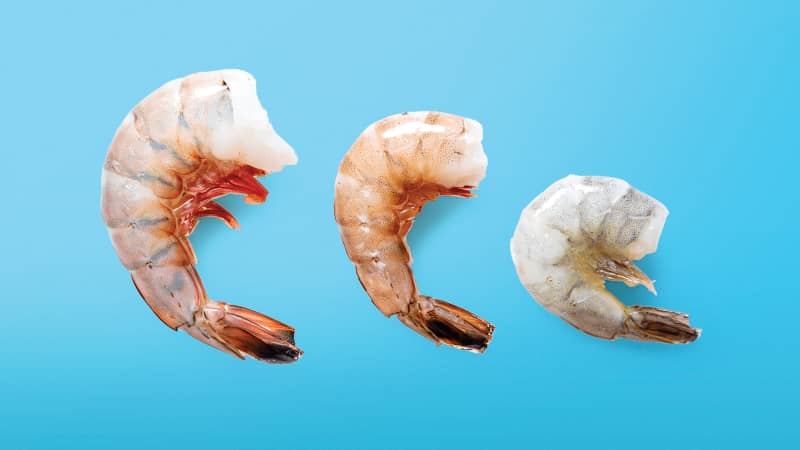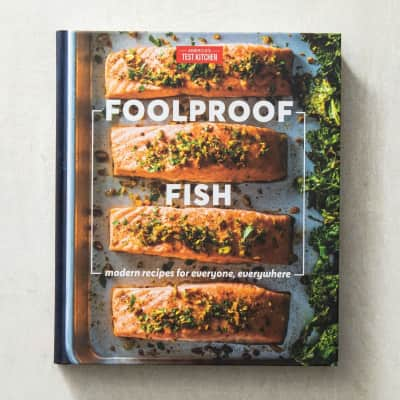What's the best place to find the freshest, sweetest, juiciest shrimp? The freezer section of your supermarket.
You Should Be Buying Your Shrimp Frozen
Published Oct. 27, 2022.

That's because when it comes to shrimp, the term “fresh” is mostly a fallacy: Unless you live near a coastal area and have access to fresh-off-the-boat shrimp, virtually all shrimp sold at fish counters were bought previously frozen and thawed by the fishmonger.
And the longer shrimp sits, the more its flavor and texture deteriorate.
Sign up for the Cook's Insider newsletter
The latest recipes, tips, and tricks, plus behind-the-scenes stories from the Cook's Illustrated team.
Why You Should Buy Shrimp Frozen
The quality of frozen shrimp is generally excellent. For superior flavor and texture, buy shrimp frozen and defrost them just before cooking. Within just 24 hours of thawing, the muscle tissue begins to degrade and turn mushy, and the shrimp's flavor becomes less fresh.
Frozen shrimp offer flexibility: Bagged, IQF (individually quick-frozen) shrimp don’t freeze together in clumps, so you can take out only what you need and leave the rest in the freezer. Read more about the freezing process below.
What Is Individually Quick-Frozen (IQF) Shrimp?
Most shrimp are individually quick-frozen (IQF) right on the boat as soon as they are caught to lock in freshness. The process, which is also known as flash freezing, involves spreading the shrimp on a conveyor belt and running them through a blast chiller, which allows them to be frozen individually and rapidly.
The quick-freezing process avoids the formation of large ice crystals which would otherwise damage the flesh. And because the shrimp are frozen separately before they are packaged, individual shrimp don’t stick together.
Make Sure Your Shrimp Is Salt- and Chemical-Free
To prevent darkening or water loss during thawing, some manufacturers add salt or chemicals such as sodium tripolyphosphate (STPP) to shrimp that compromises the meat’s texture and flavor. To find out if shrimp is salt- or STPP-treated, ask the fishmonger or check the package label: “Shrimp” should be the only ingredient.
Foolproof Fish
Want to broaden your seafood scope? No matter what you buy from the fish counter, this award-winning book will teach you how to cook it.Go for Wild Shrimp, Not Farm-Raised
Wild shrimp are tastier than farm-raised shrimp due to their diet of algae, which contains precursor compounds that convert to flavorful bromophenols reminiscent of iodine and the sea.
Buy Shrimp Shell-On, Not Peeled
Not only are shell-on shrimp considerably cheaper than peeled ones but they’re often in better shape than shrimp that get raggedy during commercial shelling. Plus, the shell itself is one of the most flavorful parts of the crustacean and can be used to make a quick, briny stock for seafood-based pan sauces, soups, or stews.


